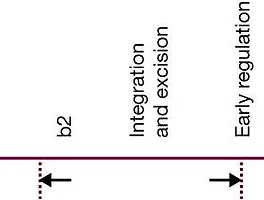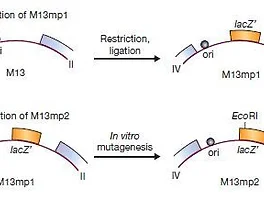모든 내용은 Gene Cloning and DNA Analysis, 6th edition, T.A.Brown, Wiley-Blackwell을 참고하여 작성하였습니다.
본 글의 제목은 언급된 도서의 각 챕터의 절 이름과 동일합니다.
대부분의 그림 역시 본 책에서 왔으며, 그 이외에는 따로 표시합니다.
도움이 되었다는 댓글 하나가 큰 힘이 됩니다!
Chapter 6
Cloning Vectors for E. coli
6.1 Cloning vectors based on E. coli plasmids
Cloning vector로서는
①정제가 쉽고
②transformation이 쉬우며
③편리한 selectable marker를 가지고
④큰 DNA 조각(수 kb)을 삽입할 수 있는 bacterial plasmid가 많이 쓰임
pBR322는 plasmid를 이용한 연구의 초창기에 많이 쓰였음
(p: plasmid / BR: laboratory or researcher name / 322: number distinguishing this plasmid from others in the same laboratory)
- 세 가지 자연 유래 plasmid를 조립해서 만듦 (R1, R6-5, pMB1)
- 4363bp로 비교적 큰 유전자 도입 가능 (purification을 위한 크기 제한이 10kb이므로 6kb까지 가능)
- Selection marker로 ampR, tetR을 가짐 (ampR에 PstI, PvuI, or ScaI / tetR에 BamHI and HindIII site)
- MCS, replication origin
- High copy number (1000~3000 by plasmid amplification)
pBR322는 R1으로부터 ampR gene, R6-5로부터 tetR gene, pMB1으로부터 replication origin을 가져옴
단순히 세 plasmid들의 부분을 한 번에 합쳐서 만들어진 것이 아니라 굉장히 여러 단계를 거치면서 크기 조정과 위치 조정 등을 통해 만들어짐
pBR322를 변형한 다양한 plasmid들이 존재
pBR327
Conjugation 불가. 혹시 모를 pBR327의 전파를 방지 → biological containment
pUC8
tetR gene 대신 lacZ’ gene을 가져 X-gal, IPTG 포함 배지 상에서 Lac selection 가능
High copy number(500~700)
Sticky end를 만드는 RE를 비롯한 아홉 가지의 RE site를 가지며, 이는 M13mp가 가지는 RE site와 동일하여 서로 호환 가능
pUC18
pUC8보다 많은 수의 RE site를 가짐
pGEM3Z
pUC8과 같이 ampR gene과 lacZ’ gene을 가짐
MCS 양쪽으로 SP6 phage RNA pol promoter와 T7 phage RNA pol promoter를 가짐
정제된 두 phage RNA pol을 넣어주면 in vitro transcription이 가능함. E. coli RNA pol promoter는 가지지 않으므로 in vivo에서 E. coli RNA pol 이용한 transcription은 불가
매우 강력한 pol이기 때문에 E. coli보다 훨씬 빠른 속도로 전사
In vitro RNA synthesis에서 phage pol에 의해서는 전사 종결이 일어나지 않기 때문에 vector를 잘라 전사 강제 종결점을 만들어줘야 함
'studio > scienza' 카테고리의 다른 글
| [Chapter 6] Cloning vectors based on λ bacteriophage (3) | 2015.06.01 |
|---|---|
| [Chapter 6] Cloning vectors based on M13 bacteriophage (8) | 2015.05.13 |
| [Chapter 5] Introduction of DNA into non-bacterial cells (2) | 2015.05.11 |
| [Chapter 5] Introduction of phage DNA into bacterial cells, Identification of recombinant phages (0) | 2015.05.11 |
| [Chapter 5] Transformation, Identification of recombinants (5) | 2015.05.11 |




